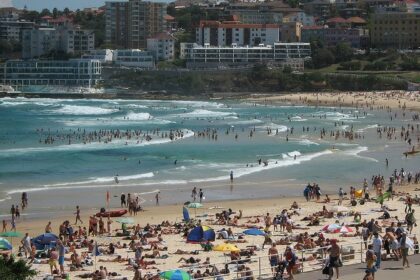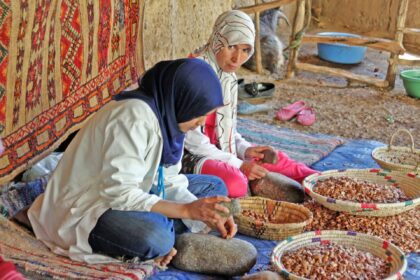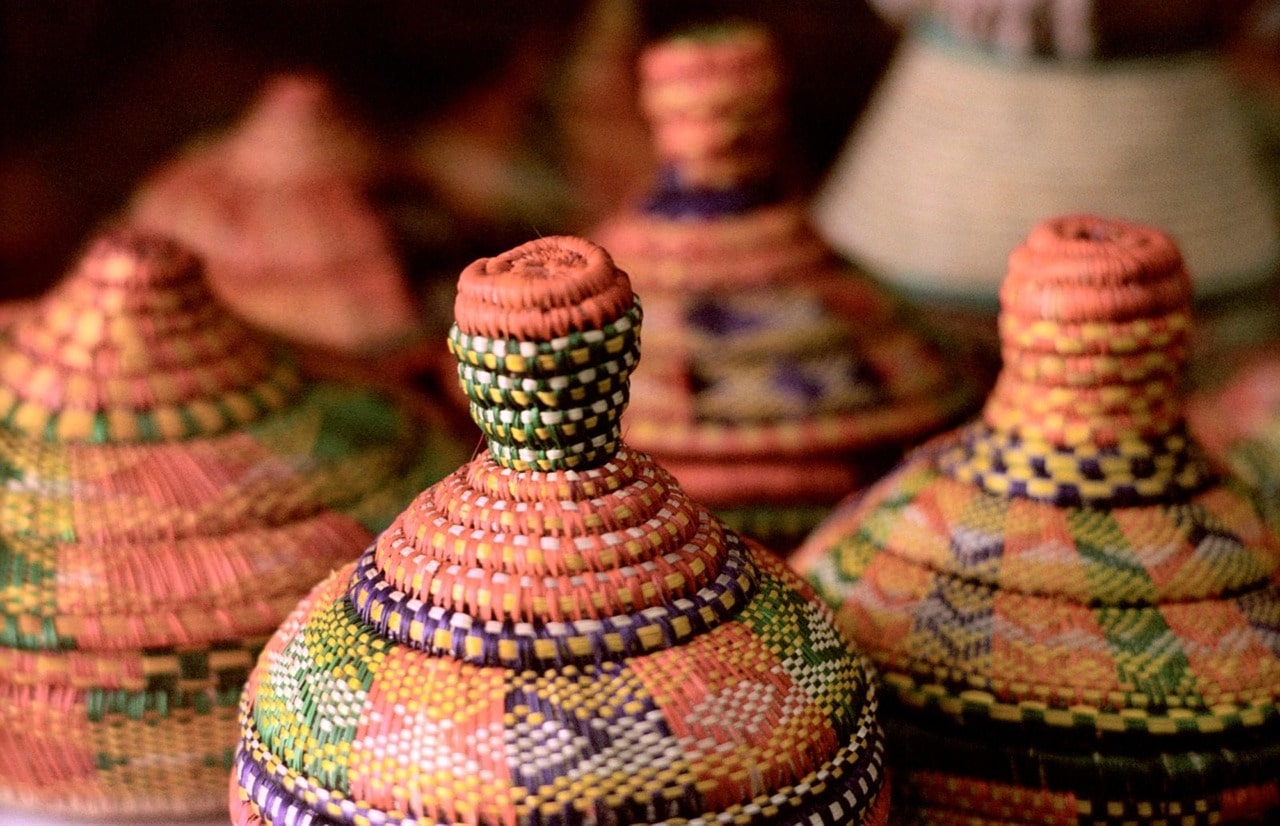
By Dr. Glenn W. Hawkes, Director of the Ward Brook Center which provides practical training for Rwandan teachers, students, and administrators.
I first visited Rwanda in 2002, just eight years after the 1994 genocide. I had been directing a summer program for youth about the Holocaust, when in 1997 a friend handed me a video cassette containing a powerful Rwandan genocide documentary. Valentina’s Nightmare, produced by the BCC for Frontline, was centered around one brave girl who survived the ethnically-motivated massacres. Over 800,000 Rwandans were murdered in just three months.
In 1994, Valentina was a nine-year-old schoolgirl living in a place called Nyarubuye, meaning “place of stones,” in southeastern Rwanda, just a few kilometers from the Tanzanian border. When the killings erupted in Kigali on April 7, some of the targeted Tutsi population in Nyarubuye fled across the border into Tanzania; however, many others gathered in a Roman Catholic church and school, where they mistakenly thought they would find protection.
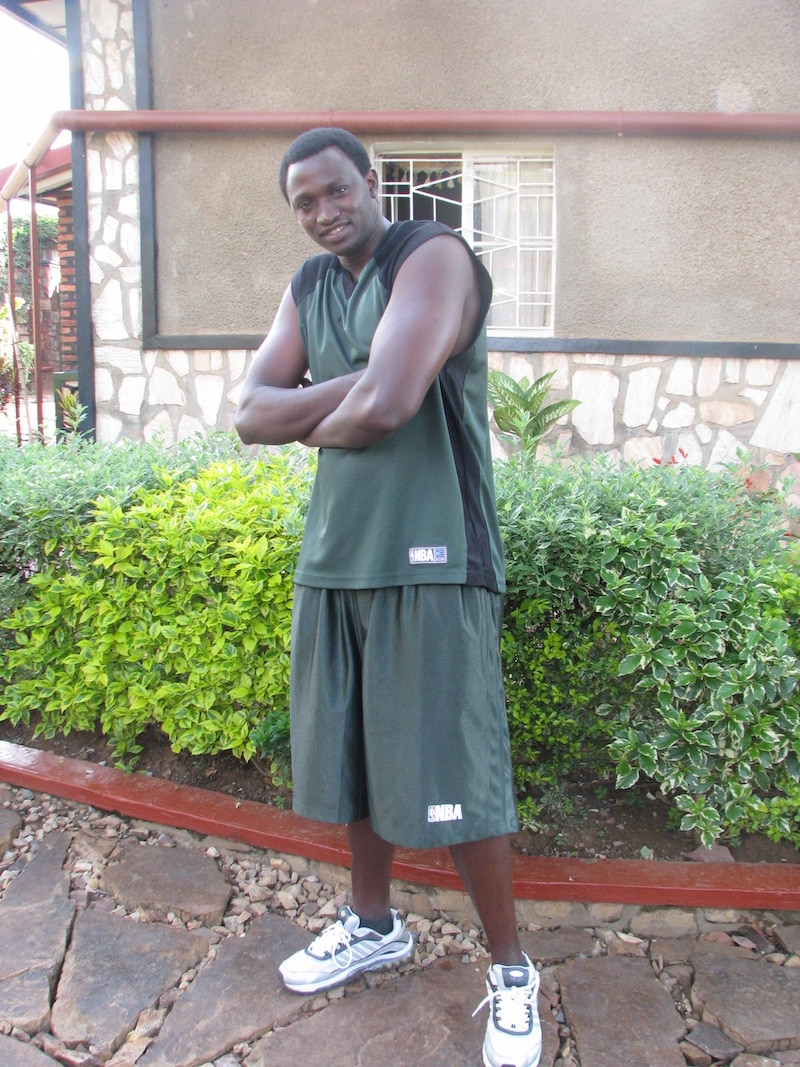
Rwandan Genocide Survivors
To say the rest is history would be a disservice to the survivors of that tragic event. It would surely be impossible for anyone to live for 43 days with no food among the rotting corpses of friends and family, but that is what Valentina did. Like many other children who were trapped in those buildings, she spent days lying quietly beneath a pile of bodies, fearing for her life.
The story of Valentina’s six-year-old brother, Placide, is almost as miraculous. Along with his sister, mother, and other family members, Placide sought refuge in the church. Machetes — several millions of them — were on hand when the genocide started. Some anti-Tutsi paramilitary groups were also in possession of hand-grenades. It didn’t take long before a grenade exploded next to Placide, badly injuring his leg.
Placide and his 11-year-old uncle were advised to flee the carnage. Riding on his uncle’s back, Placide managed to escape; however, the two survivors had to separate and Placide soon found himself on his own. He spent days crawling and hiding among bushes, until he was finally discovered by soldiers of the “R.P.F.” (Rwandan Patriotic Front) as they steadily advanced toward Rwanda’s capital of Kigali to defeat the Hutu Power genocidal regime and army.

Survival Of Imigongo
Like Valentina and Placide, the survival of Rwanda’s traditional art form, Imigongo, was never guaranteed. Imigongo is an art form with origins in 18th-century southeastern Rwanda, precisely the area where Valentina and Placide were born. Some sources suggest the earliest forms were employed with some magical intent, while others believe Imigongo has always been purely decorative. Traditionally it was found on the interior walls of huts. Today it is produced on small wooden panels and sold to curious tourists.
It’s important to note that, like traditional Rwandan dance, Imigongo was created in honor and recognition of the King; therefore, all three of the ethnic groups in Rwanda — Tutsi, Hutu and Twa – were engaged in its development.
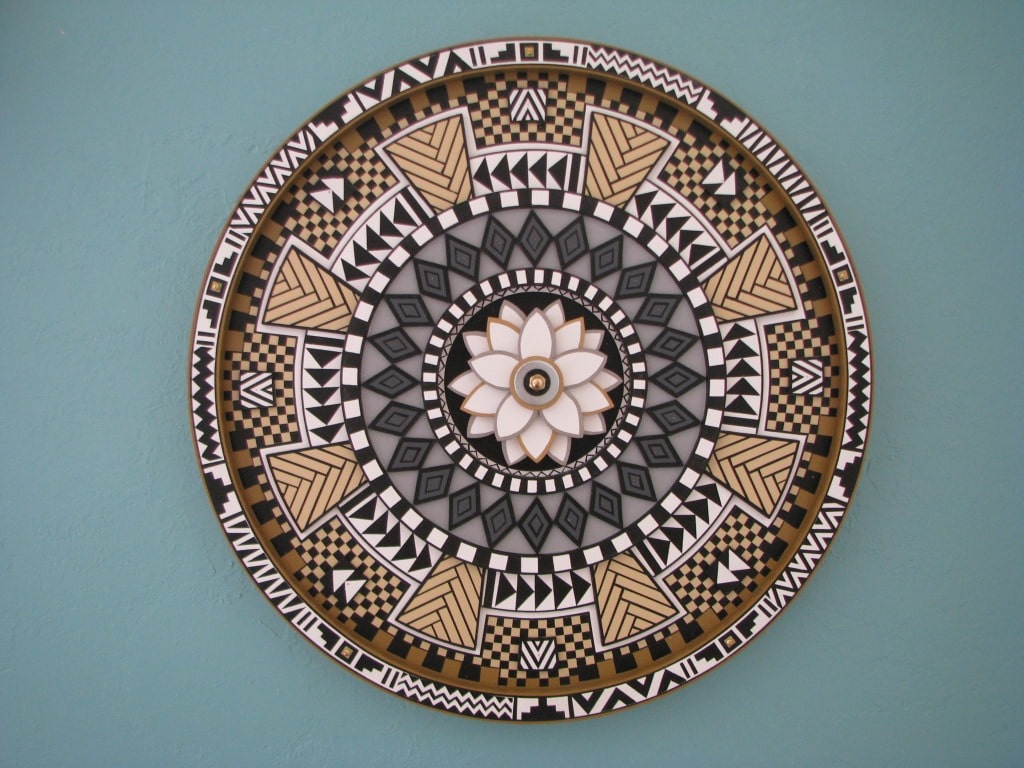
What Is Imigongo?
This art form is created from calf dung and wood ash that are kneaded together to form a thick dough-like mixture. This is then pressed onto a wall or panel, using thumb and fore-finger to form just slightly raised ridges.
Traditionally, these ridges were formed in simple, bold, geometric designs such as zigzags, triangles or spirals. After being left to dry for a few weeks, the designs are then painted, with color changes always occurring at the top of a ridge. Very often black and white dyes are used to create a bold impact. Other traditional colors, all organically derived, are grey, red and a creamy beige-yellow. Today, new colors and designs are becoming popular.
Explore #Rwanda #culture and #history through #art while helping #local communities. Click To Tweet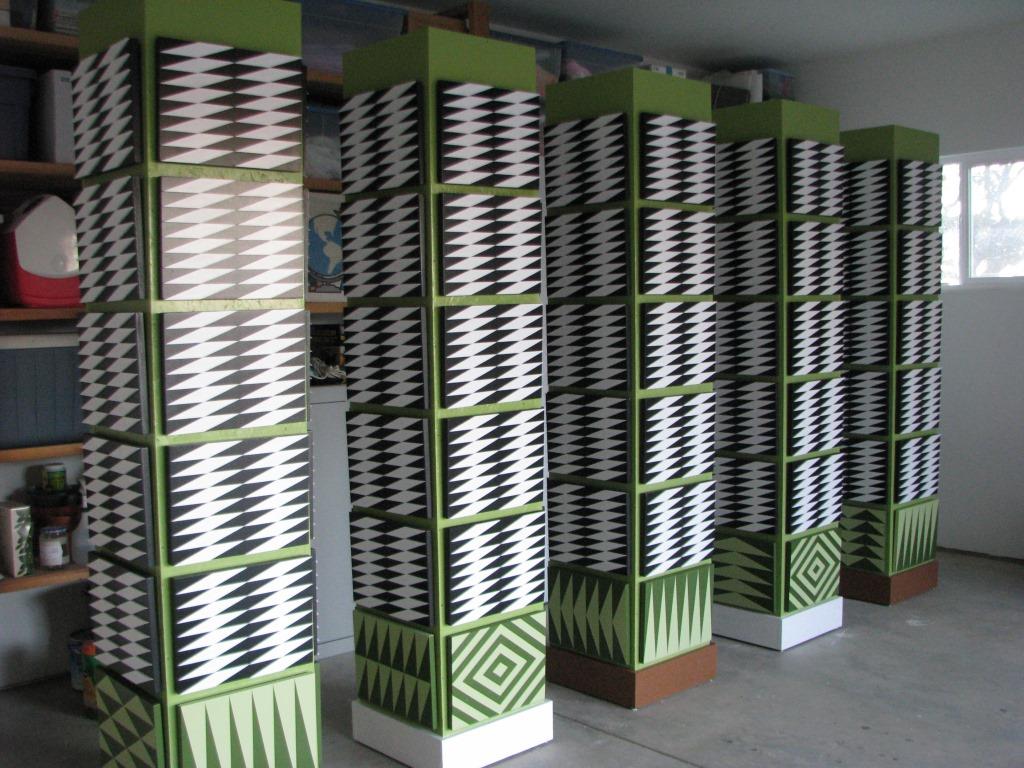
Experience Imigongo & Rwandan Culture
Much of the Ward Brook Center’s work in Rwanda has entailed making connections and nurturing relationships between Rwandans and the muzungus (foreigners) who come to Rwanda to work with Rwandan people and organizations. Our current project, Imigongo by Invitation, is a two-week course for artists and other visitors who would like to learn this art form. The course also integrates the needs and interests of people coming to Rwanda with the needs and interests of Imigongo artists.
No one has assisted us more in this project than Placide, who works as a translator. Valentina used to be part of our team, assisting us with hosting curious visitors who wanted to experience Rwandan culture. She now lives in the US, where she is married with two lovely children.
We are also lucky to have a talented graphic artist on our team. Colorado native Karen Johnson came to us with a broad range of social and artistic interests. With Placide as guide, she has experienced Rwandan culture on a first-hand basis, and the two have developed a wonderful friendship. Karen has also learned the art of Imigongo, thanks to a local artist named Cecile. Her two-week training period took place in Ward Brook’s compound in Kigali, where the idea for Imigongo by Invitation was born.
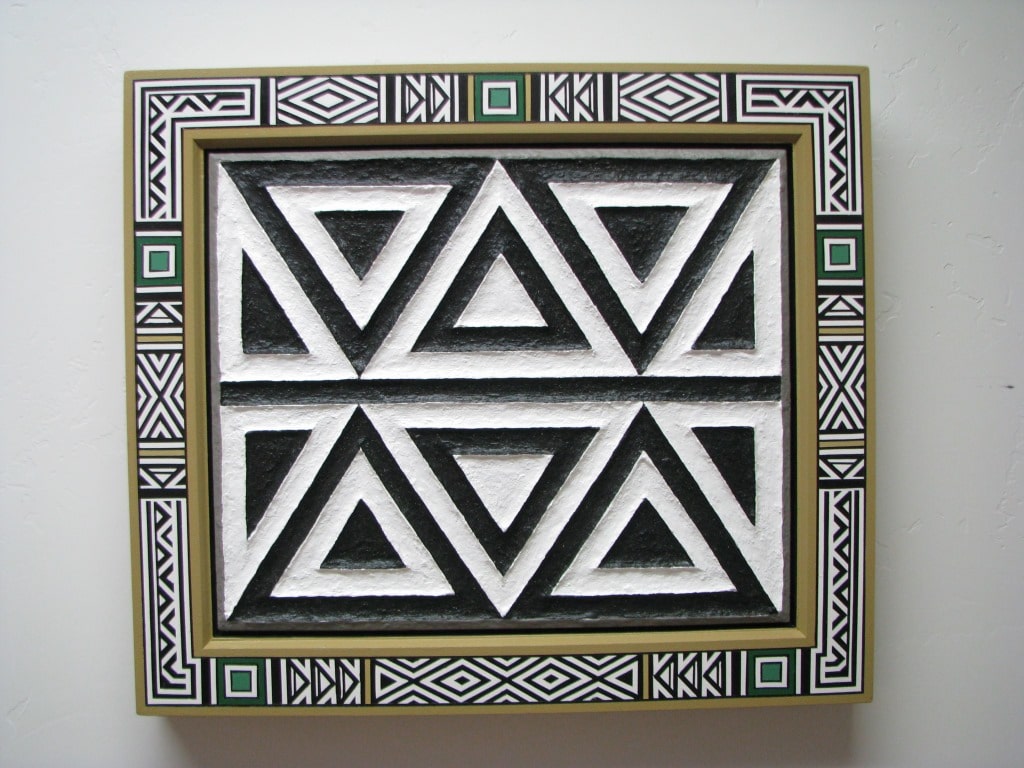
Imigongo by Invitation is more than an artistic experience; it’s a true cultural immersion. Placide is always recounting the terrible events of 1994 to visitors to give them a better understanding. Other Rwandan genocide survivors also share their experiences with guests, including the stories of neighbors who risked their own lives to save others. The fact that Nyarubuye is the birthplace of the Imigongo tradition adds poignancy to the stories that Placide and other survivors share with visitors.
Here's how to have #meaningful #cultural immersions in #Rwanda. Click To TweetImigongo by Invitation will take place in December 2017. Artists and non-artists who want to visit Rwanda, meet locals and learn more about this amazing art form, should contact me, Glenn Hawkes, at [email protected].
For additional information about our work, see centersforsocialresponsibility.org.
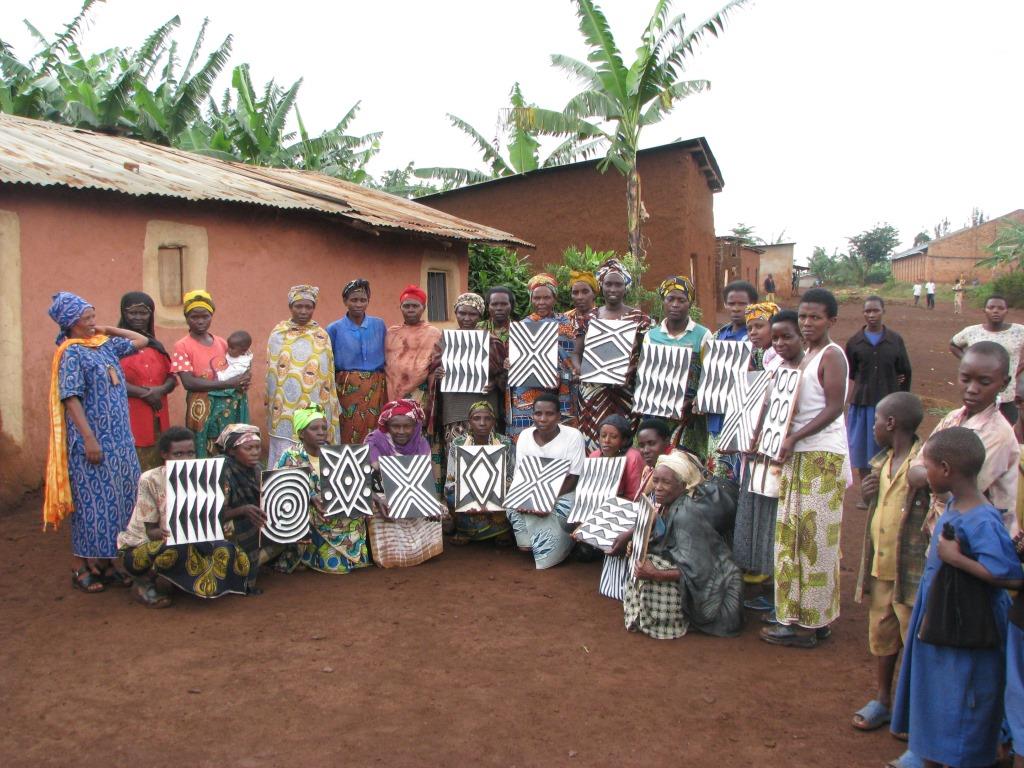
About The Ward Brook Center
Everything the Ward Brook Center works on is for charity, more specifically for paying the school fees for about 30 young people, mostly in secondary school, where the tuition is high. Placide is now the Program Director of the Center in Rwanda. Most of the young people in our program are the children of disadvantaged Rwandan mothers who are members of an association of people living with HIV/AIDS.
By participating Imigongo by Invitation you’ll be helping to fund the Ward Brook Center’s life-changing work with local communities, while also immersing yourself in Rwandan history and culture.
Recommended Reads:
A Thousand Hills: Rwanda’s Rebirth and the Man Who Dreamed It
Rwanda, Inc.: How a Devastated Nation Became an Economic Model for the Developing World
We Wish to Inform You That Tomorrow We Will be Killed With Our Families: Stories from Rwanda
Jessica Festa
Latest posts by Jessica Festa (see all)
- A Culturally-Immersive Adventure In Mongolia’s Altai Mountains - Jul 8, 2023
- This Recipe Sharing Platform Supports Women In The Culinary Industry (Labneh Recipe Included!) - Nov 5, 2020
- Hiking The Mohare Danda Community Eco-Trek In Nepal - Jun 3, 2020
- 6 Important Questions For Choosing A Responsible Yoga Retreat - May 18, 2020
- How To Create & Grow A Profitable Blogging Business (Ethically) - Jan 18, 2020





